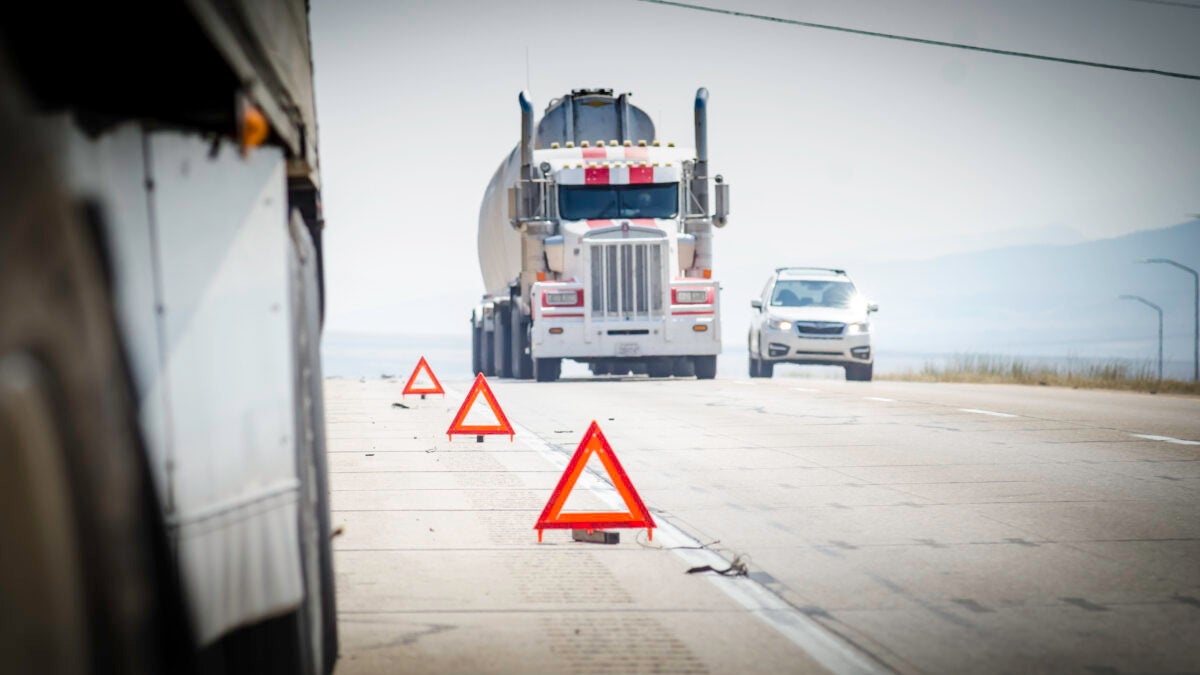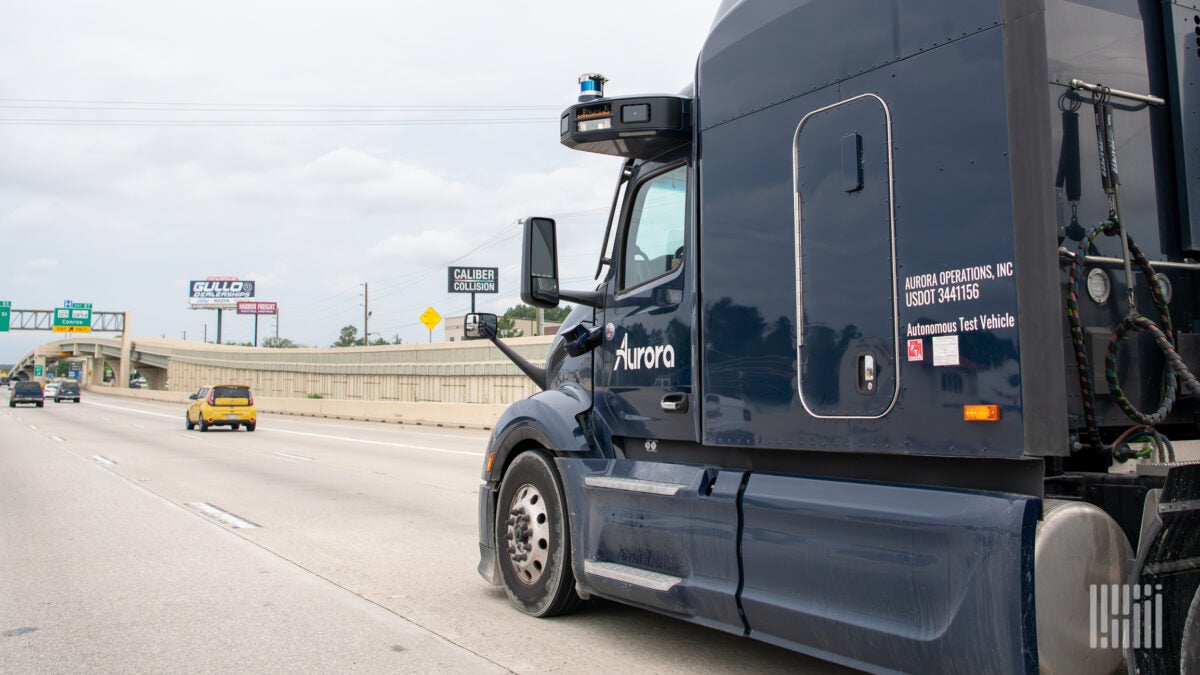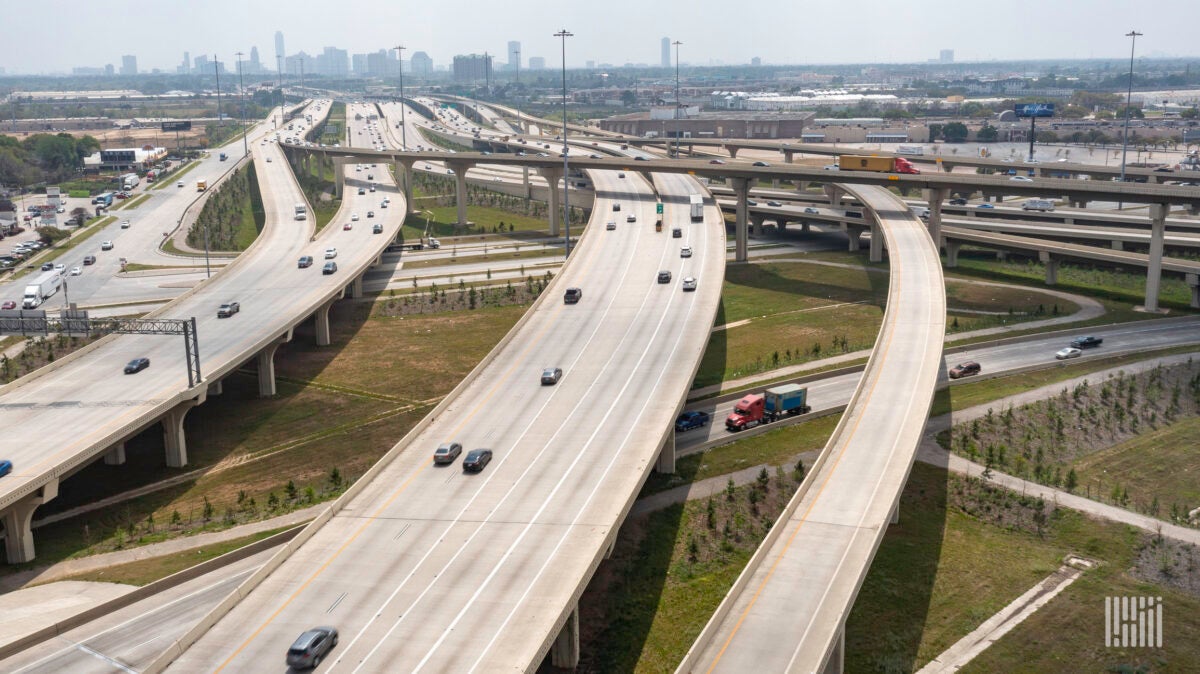The autonomous truck battle: Roadside cab-mounted beacons versus triangles

The question of roadside warning devices adds a triangle-shaped wrinkle to autonomous truck makers’ plans after the Federal Motor Carrier Safety Administration recently ruled that Aurora and Waymo did not provide enough data backing their request to ditch the traditional triangular road devices for cab-mounted warning beacons. Aurora and Waymo filed the petition in 2023 seeking a five-year exemption from the required placement of warning devices around stopped commercial motor vehicles (CMVs). Level 4 automated driving systems (ADS) have a unique issue if a roadside event occurs – namely that there would not be a person available to leave the vehicle and place warning devices, which can come in the form of fusees, liquid-burning flares or three bidirectional reflective triangles.
For the FMCSA, one of the reasons behind the denial is that the cab-mounted warning beacons are only at the front of the truck, while the flares, fusees or reflective triangles are behind the trailer. In layman’s terms, the concern is that it’s harder to see.
FMCSA Deputy Administrator Vinn White said in the denial notice: “One distinction between … warning triangles and the proposed beacons is that warning triangles are placed at the rear of a stopped CMV (in addition to the front), while the proposed beacons are located only at the front of the cab — raising the possibility that drivers see the rear of a stopped CMV before they see the beacons. While applicants contend that the beacons are visible from behind the vehicle, the evidence was inconclusive.”
The same notice stated that Waymo commissioned a study to evaluate whether drivers could detect, recognize and respond to certain beacons on a closed test track in daylight and nighttime conditions while simulating a stopped CMV. The study compared driver reactions to cab-mounted warning beacons with reactions to warning triangles and found that the participants preferred the beacons over the triangles.
Aurora also did a study observing the reactions of over 7,000 passenger vehicles to the presence of beacons versus warning triangles on public roads with unaware passing motorists traveling at highway speeds. The study found that similar proportions of motorists responded to the presence of beacons and warning triangles at similar distances and rates via sensors mounted on the stopped vehicles.
While Waymo went by the wayside and is focusing on taxis and cars, Aurora is not concerned the triangle-shaped challenge will impact its plans for launching commercial vehicles in April, according to the Pittsburgh Post-Gazette.
Aurora and Continental team up with Nvidia on long-term manufacturing deal

The long-term partnership with German Tier 1 supplier Continental AG back in April 2023 now has a new partner, with Nvidia providing the primary computing power for the Aurora Driver system. While many at the 2025 Consumer Electronics Show in Las Vegas viewed Nvidia’s latest graphics cards built on the Nvidia Blackwell architecture, trucking industry observers noted the company is using that architecture to tackle autonomous trucks.
Specifically, a dual Nvidia Drive Thor system-on-a-chip (SoC) configuration runs on the company’s DriveOS platform. That is the primary computer for the Aurora Driver and will accelerate tasks to help its autonomous vehicles navigate the world. Production samples of Drive Thor are coming in the first half of 2025.
In the meantime, Continental is developing the automotive-grade hardware kit for the Aurora Driver, with high-volume manufacturing at scale expected to begin in 2027. For Aurora, its kit has multiple sensors, including cameras, radar and lidar arrays. Volvo and Paccar, two major Class 8 OEMs, will then integrate the Aurora Driver into their trucks. Volvo unveiled its first-ever production-ready autonomous truck at ACT Expo last year in Las Vegas.
The recent development is a big leap in the dwindling field of companies in the autonomous trucking space. Alan Adler wrote last July, “But as other autonomous players – notably Embark, TuSimple and Waymo Via – have failed, exited or paused U.S. operations, Aurora has emerged along with Kodiak Robotics as the two companies closest to commercialization. Daimler Truck independent subsidiary Torc Robotics is well along but sees 2027 for its driverless launch date.”
HERE beefs up its mapping services with AWS deal and AI-powered assistant

HERE Technologies announced at CES a 10-year, $1 billion cloud infrastructure agreement with Amazon Web Services to bolster its mapping services for automotive, transportation and mobility companies. This includes support for AI-powered live-streaming mapping services in addition to accelerating the development of advanced driver assistance systems, automated drive and digital car experiences.
With the added digital horsepower from AWS servers, HERE also unveiled its latest AI solution, HERE AI Assistant, which uses multiple generative AI large language models to give natural language-powered location-aware guidance.
The AI Assistant is worth watching as the release touts many features, such as personalized travel plans based on requests, driving habits, preferences and real-time conditions. For drivers, a huge challenge is finding the right route and avoiding restricted roads, with many resorting to buying truck stop GPS solutions that may or may not have updated their databases.
Briefly noted …
Daimler Truck North America plans a major investment in a Detroit manufacturing plant as part of its subsidiary Detroit Diesel Corp. The company plans to invest up to $285 million in modernizing the existing plant and focus on its internal combustion engine platform while enhancing its research and development facilities.
Trucks Venture Capital, co-founded by Reilly Brennan, has partnered with Jeffrey Schox, Kathryn Schox and Puneeth Meruva to launch a $70 million fund with a focus on seed and pre-seed funding for autonomous vehicle tech, electric air taxis, EV charger maintenance and mobility data platforms.
TuSimple founder and former CEO Xiaodi Hou recently won a legal battle in a Texas Business Court after Judge Sofia Adrogué rejected TuSimple’s request for a restraining order and injunctions against Hou. TuSimple alleged in October that Hou had misappropriated trade secrets. Since the October filing, TuSimple rebranded as CreateAI and now focuses on animation in the video game industry.










